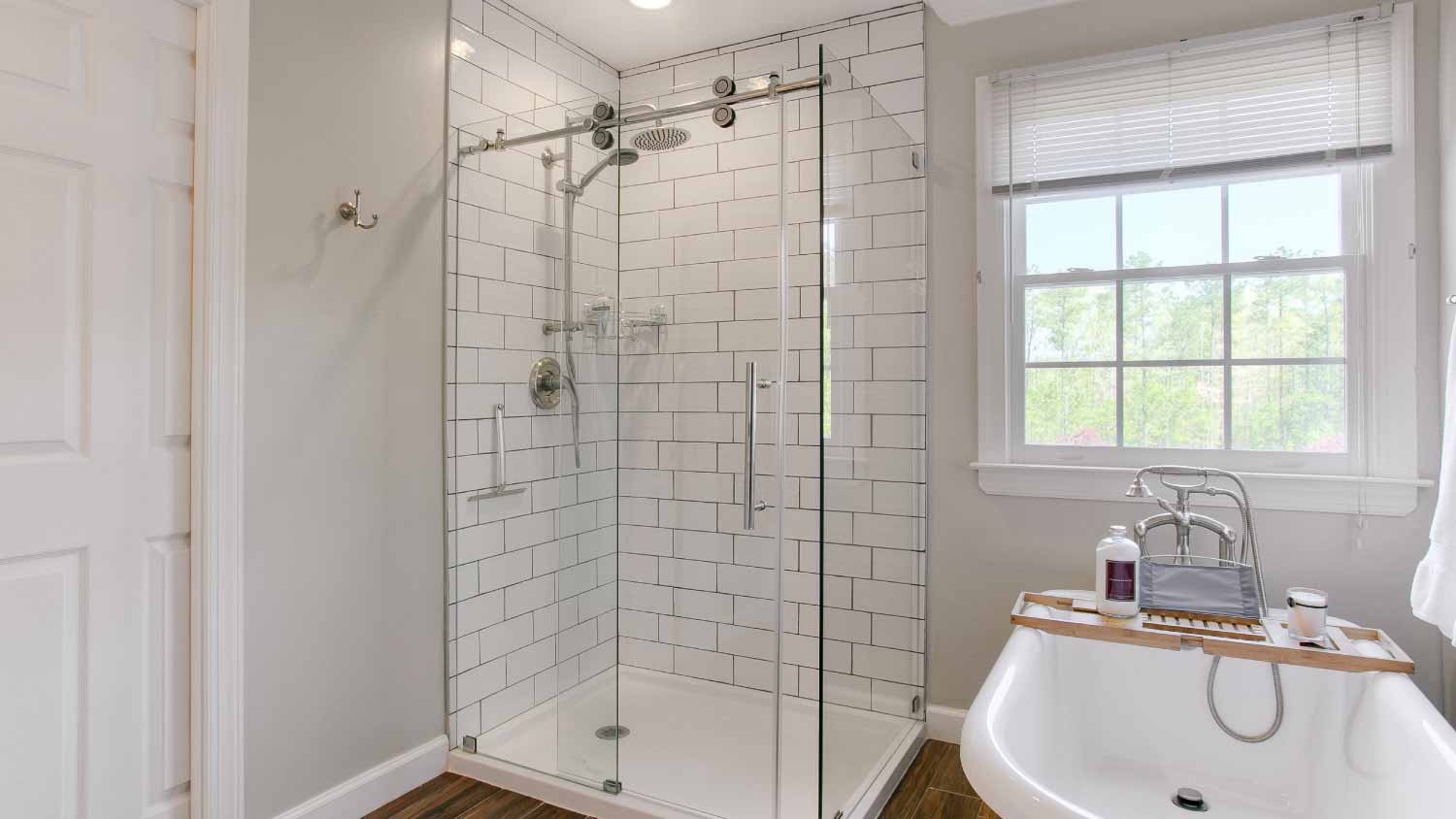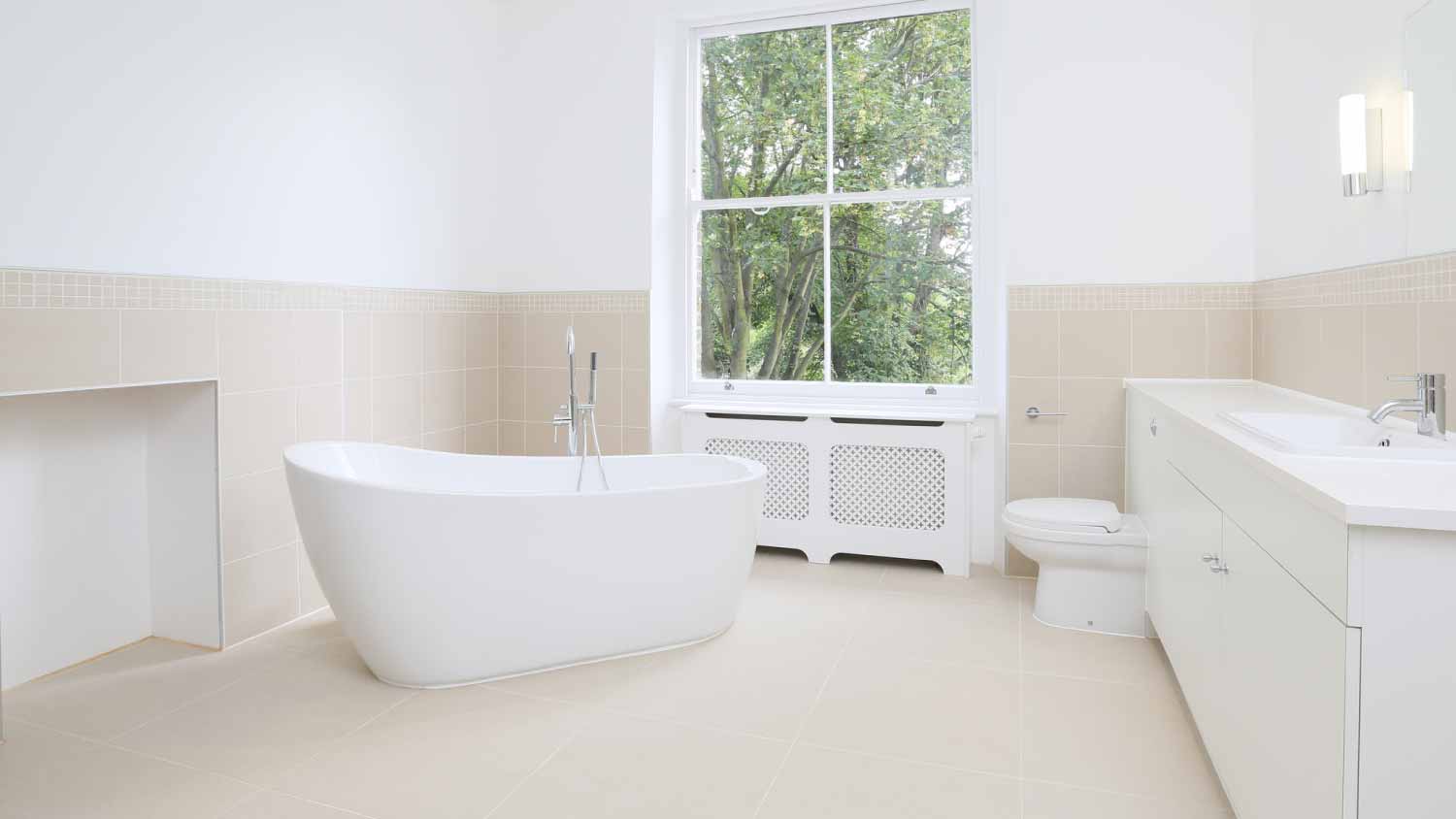What Health Risks Are Associated with Bathtub Refinishing?
Fumes from bathtub refinishing or reglazing chemicals can be hazardous


Refinishing a bathtub involves adding a chemical coating over the old surface.
Reglazing also includes stripping off the previous coating and sanding down the tub.
The fumes from stripping a tub can contain methylene chloride, a dangerous, colorless liquid.
Your entire household should leave the property during the refinishing or reglazing and always ventilate the area.
Bathtub refinishing costs $460 on average, and it’s worth hiring a pro to do the job safely.
If you have a tub that has seen better days, but you don’t want to remove and replace it completely, then you may need to have it reglazed or refinished to restore it to its original state. However, due to tub reglazing fumes, you need to keep these essential health and safety considerations in mind whether you hire a contractor to refinish your tub or do it yourself.
How Do You Refinish a Bathtub?
Refinishing a tub consists of applying a new chemical coating with a special brush or roller to an acrylic, porcelain, fiberglass, or cultured marble bathtub without removing the old layer first. You can refinish a tub yourself if you’re a true DIY-er, but the new finish can look “painted” or different than the original color or texture.
What Is the Difference Between Refinishing and Reglazing a Bathtub?
Whether your tub is refinished or reglazed depends on whether or not the old coating was removed before putting a new layer of epoxy or another coating. Reglazing involves stripping off the previous coating and sanding down the tub. It’s generally a task best performed by professionals due to the hazardous chemicals involved.
Most tubs can be reglazed if they are not overly damaged, but the process is generally recommended for steel, cast iron, or fiberglass tubs. Almost any color or appearance can be achieved, including the look of natural stone or marble.
Essential Bathtub Reglazing Safety Tips to Preserve Your Health
You should always wear protective clothing and use the appropriate safety-rated equipment whenever you are doing any household repair or remodeling work, and reglazing a bathtub is no exception.
Even if you hire a professional, let the area air out and keep it ventilated after the work is complete until you can no longer detect any unusual or chemical odors. Any other surfaces in the vicinity of the tub should be covered in protective paper and drop cloths, and you should wait a day or two to remove everything and use your bathroom and tub.
Even if you hire a professional to reglaze or refinish your bathtub, you and your family or other residents should leave the property during the entire process, including while the epoxy coat cures after application.
What Are the Dangers of Tub Reglazing Fumes?
The fumes from stripping a tub of its previous coating(s) can contain methylene chloride, a colorless liquid that smells similar to chloroform and emits VOCs, aka volatile organic compounds. If the area is poorly ventilated (which is common in bathrooms) or the person doing the work isn’t wearing the appropriate protective gear, they could stop breathing, or worse—methyl chloride has an effect similar to carbon monoxide poisoning.
The epoxy coatings used to finish bathtubs can also emit dangerous vapors such as isocyanates when sprayed. These are classified as potential human carcinogens according to the U.S. Department of Labor, and protective gear should be worn when working with them.
Facts About Tub Refinishing Chemicals
One of the significant risks of refinishing a bathtub is exposure to methylene chloride or dichloromethane, which strips the tub and removes the previous glaze or finish.
Exposure to methylene chloride can be lethal. Vapors from this liquid can collect in the bottom of the tub and cause the person refinishing the tub to asphyxiate or even suffer from a heart attack because methyl chloride turns to carbon monoxide in the body, cutting off oxygen supply.
Methyl chloride has high vapor pressure, meaning that it evaporates extremely quickly and turns into gas that can easily be inhaled, especially in a small bathroom that may not be adequately ventilated.
Should You Hire a Professional to Refinish Your Bathtub?
Unless you have access to all the necessary protective clothing and equipment and are confident in your bathroom’s ventilation system as well as your DIY capabilities, you should hire a professional to handle it. When the project is complete, you can take a relaxing soak in your new tub, knowing it was refinished correctly and safely.
How Much Does Refinishing a Bathtub Cost?
Having your bathtub professionally refinished costs around $460 (the national average), but you can expect to pay between $200 to $900 depending on the type of tub you have and the cost of labor in your location.
Refinishing a bathtub is a fraction of the cost to replace your bathtub (around $2,900), so if you’re at all hesitant about your DIY skills, hiring a pro is a somewhat small price to pay for your health and safety.

Safety Training and Health Precautions for Professional Refinishers
Contractors who handle bathtub refinishing or reglazing are well-versed in the health risks and OSHA (the U.S. Occupational Health and Safety Association) guidelines for risky jobs like these, making it an easy choice to bring in an expert for the task.
A local bathtub refinishing company will have the correct gear, knowledge of how to ventilate the space and protect themselves, and familiarity with the various chemicals used, so you don’t need to worry about keeping yourself safe.
How Often Do Bathtubs Need to Be Refinished?
Bathtubs should be refinished every seven to 10 years, or more frequently if there is significant damage, stained, or you (or your home’s previous owners) haven’t been cleaning your bathtub the right way.
Should You Refinish or Replace Your Bathtub?
If your bathtub is on the older side, then you’ll need to determine whether it’s worthwhile to refinish or reglaze it or just replace it altogether. If the cost of removing the old tub and installing a new one versus reglazing are similar or your tub is particularly old or damaged, it might be better to get a new one. A bathtub replacement can cost around $2,900 on average and may add value to your property.
If you’ve been considering a bathroom remodel, then replacing an older tub might just make sense. Sometimes, it’s less expensive to replace a tub than to get it refinished, especially if it’s a rare type of tub made of an unusual material.
Frequently Asked Questions
It takes about 24 hours for the tub resurfacing smell to go away or the total dry time, although you will notice it the most during the first couple of hours. Refer to the manufacturer’s instructions or ask your bathtub resurfacing pro how long it takes for the smell to dissipate.
You typically have to wait two to three days after reglazing before using your tub, depending on the reglazing materials. Some materials dry fast enough that you can use the tub after one day. If your bathtub reglazing pro uses materials with a four-hour cure, then you can usually use the tub the same day. Check the manufacturer’s instructions and ask your pro for more information about how long to wait until it’s safe to use the tub.





- How to Remove a Bathtub for a Bathroom Renovation
- Does a House Really Need a Bathtub?
- Do Plumbers Install Bathtubs? Who to Hire to Install or Replace a Bathtub
- Can You Put a Hot Tub in Your Basement?
- Replacing vs. Refurbishing a Hot Tub: What You Should Know
- How Long Does a Hot Tub Last?
- 8 Must-Know Tips for Installing an Indoor Hot Tub
- 13 Hot Tub Maintenance Tips to Maximize Relaxation Time
- How Does a Hot Tub Work Its Magic?
- How to Install a Bathtub Liner Yourself in 9 Steps















